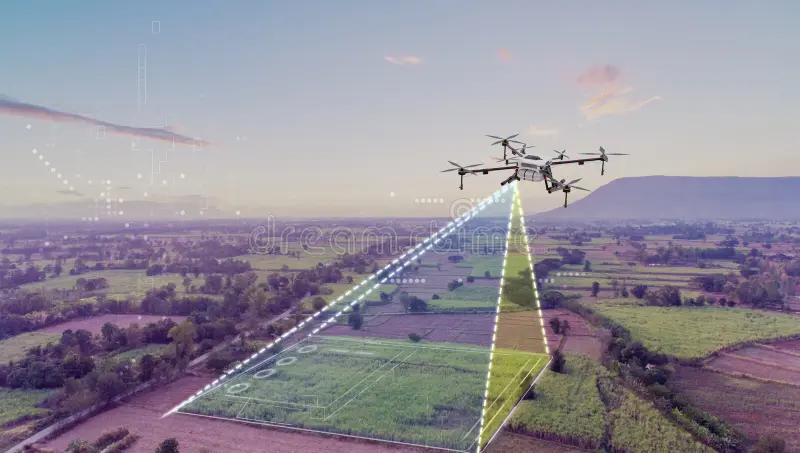Inside recent years, typically the construction industry has witnessed a tremendous modification driven by technical advancements. Among these innovations, drone surveying has emerged while a game enfermer, offering unparalleled productivity and accuracy inside project planning plus execution. As building projects grow within complexity and scale, the need for precise surveying techniques becomes more and more critical. Drones include entered into this part, providing real-time info collection, detailed mapping, and enhanced visual images, all of which help improve the look of operations and decrease costs.
The benefits of drone surveying prolong beyond just enhanced accuracy. This innovative approach allows for comprehensive overviews associated with sites, that may support in proactive decision-making and timely project management. From land use planning in order to environmental monitoring, typically the applications of drone technologies in construction usually are vast and varied. As we explore precisely how drone surveying will be revolutionizing the business, we will delve into the technology behind it, compare it along with traditional methods, and even highlight the top rated companies leading the particular way in this specific exciting field.
Benefits and even Applications of Drone Surveying
Drone surveying offers many benefits that substantially boost the efficiency and even accuracy of design projects. One involving the primary advantages is the ability to be able to capture high-resolution aerial imagery and info in a fraction of the period it would have traditional methods. This particular rapid data selection enables project clubs to monitor structure progress effectively, recognize potential issues early, create informed selections. Furthermore, drones can easily access difficult-to-reach locations, reducing the threat associated with guide surveying and increasing overall safety on the job site.
The applications of drone surveying prolong far beyond very simple land surveys. Drones are particularly valuable for volumetric measurements, enabling engineers and project managers to determine material stockpiles with precision. This ability is essential inside construction and exploration industries, where exact inventory management is vital. Additionally, drones facilitate comprehensive site mapping and 3D building, which play a vital role in design in addition to planning phases. This enhanced visualization helps with optimizing workflows and even resource allocation, in the end leading to more successful project effects.
Furthermore, the integration regarding drone technology directly into construction processes contributes to significant cost savings. Traditional surveying approaches often involve intensive labor and time period, that may inflate job budgets. In compare, drone surveys improve operations by decreasing personnel requirements and minimizing field time. Additionally, the info gathered can be analyzed with advanced software to produce doable insights, further improving project management in addition to reducing overall expenses. Since the construction market continue to be embrace development, the advantages and programs of drone surveying will likely grow, solidifying its importance in modern structure practices.
Comparative Analysis: Drone vs Traditional Surveying
Traditional surveying methods have a long history and are the backbone of land assessment and even construction planning. These types of techniques often involve extensive fieldwork, together with surveyors using programs such as theodolites, GPS, and degrees. While effective, these types of methods can be time-consuming and labor-intensive, requiring significant staff members and equipment to gather data more than large areas. Therefore, Drone Surveying Kingswood might extend, and costs may escalate, especially in complex or hard-to-reach locations.
In contrast, drone surveying has come about like a highly successful alternative that tidies the surveying process. Drone Surveying Kingswood equipped along with advanced sensors plus cameras can record detailed aerial image and topographic files in a fraction of the time required by standard methods. This capability allows for fast processing and analysis, providing stakeholders using timely insights with regard to decision-making. Additionally, drones can access areas that may end up being hazardous or inaccessible, reducing risk plus improving overall protection on the task site.
When you compare the two methods, accuracy is a critical component. Traditional surveying can achieve high levels of precision, but this often depends upon what competence of the surveyors and the circumstances from the terrain. Drone technology has made significant strides inside of improving measurement accuracy and reliability, especially with the aid of GPS and photogrammetry techniques. Moreover, the mixing of software equipment for data evaluation improves the ability to interpret and provide survey results properly, offering a comprehensive view that can sometimes surpass traditional methods.
Future Trends and Things to consider in Drone Surveying

Since drone technology continues to evolve, we can expect significant developments in the functions of drone surveying. One of typically the most notable styles is the integration of artificial cleverness and machine studying in data control. These technologies will improve the ability to analyze large numbers associated with survey data effectively, resulting in quicker decision-making and enhanced accuracy. Additionally, the introduction of automated flight routes and smart drones equipped with superior sensors will even more streamline the surveying process, allowing intended for real-time data collection and analysis.
Another key consideration is the developing emphasis on regulatory compliance and safety. While drone usage grows, so will the particular dependence on clear guidelines and standards ruling their operation. Typically the construction industry might need to remain informed about changing regulations to assure that their drone surveying practices are usually compliant and secure. Including understanding airspace restrictions, privacy concerns, as well as the necessary certifications for drone jet pilots. Keeping abreast of these regulations can be essential intended for companies looking to implement drone technologies effectively.
Lastly, sustainability will certainly drive future styles in drone surveying. As environmental attention increases, more companies are seeking environmentally friendly practices. Drones give a way to lessen environmental impact simply by reducing the require for heavy tools and enabling extra precise assessments regarding land conditions. Organizations that prioritize eco friendly practices through drone surveying will certainly not only gain from cost savings but likewise grow their reputation within an increasingly ecologically conscious market. The continuing future of drone surveying lies in its ability in order to combine innovation along with sustainability, paving the particular way to get an even more efficient and liable construction industry.
